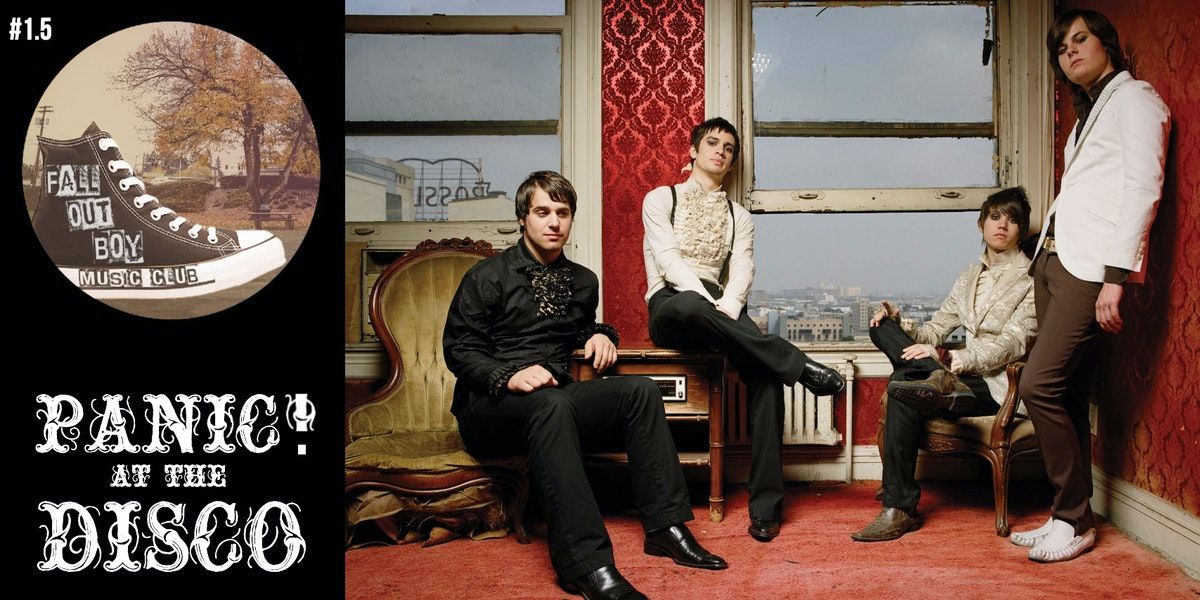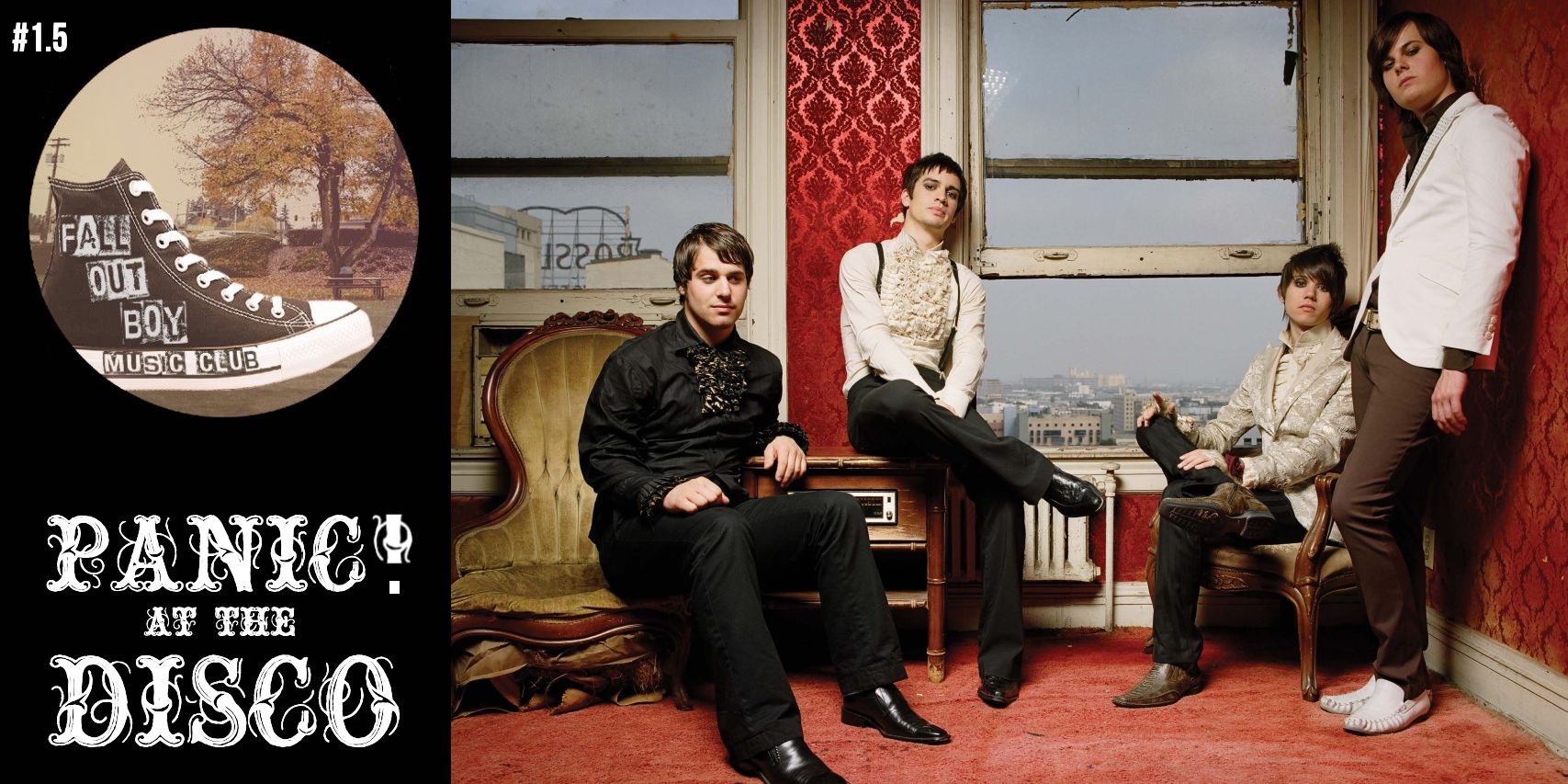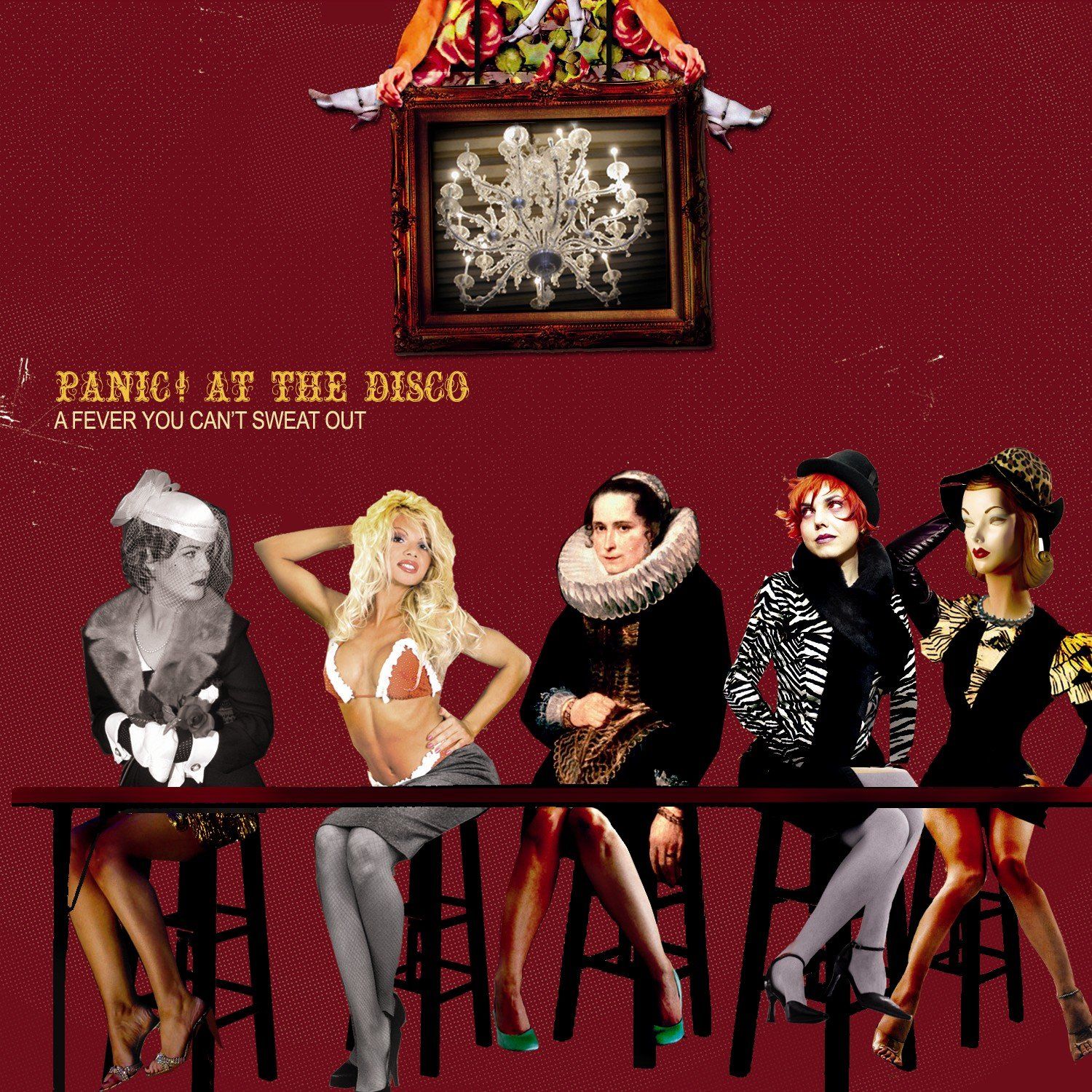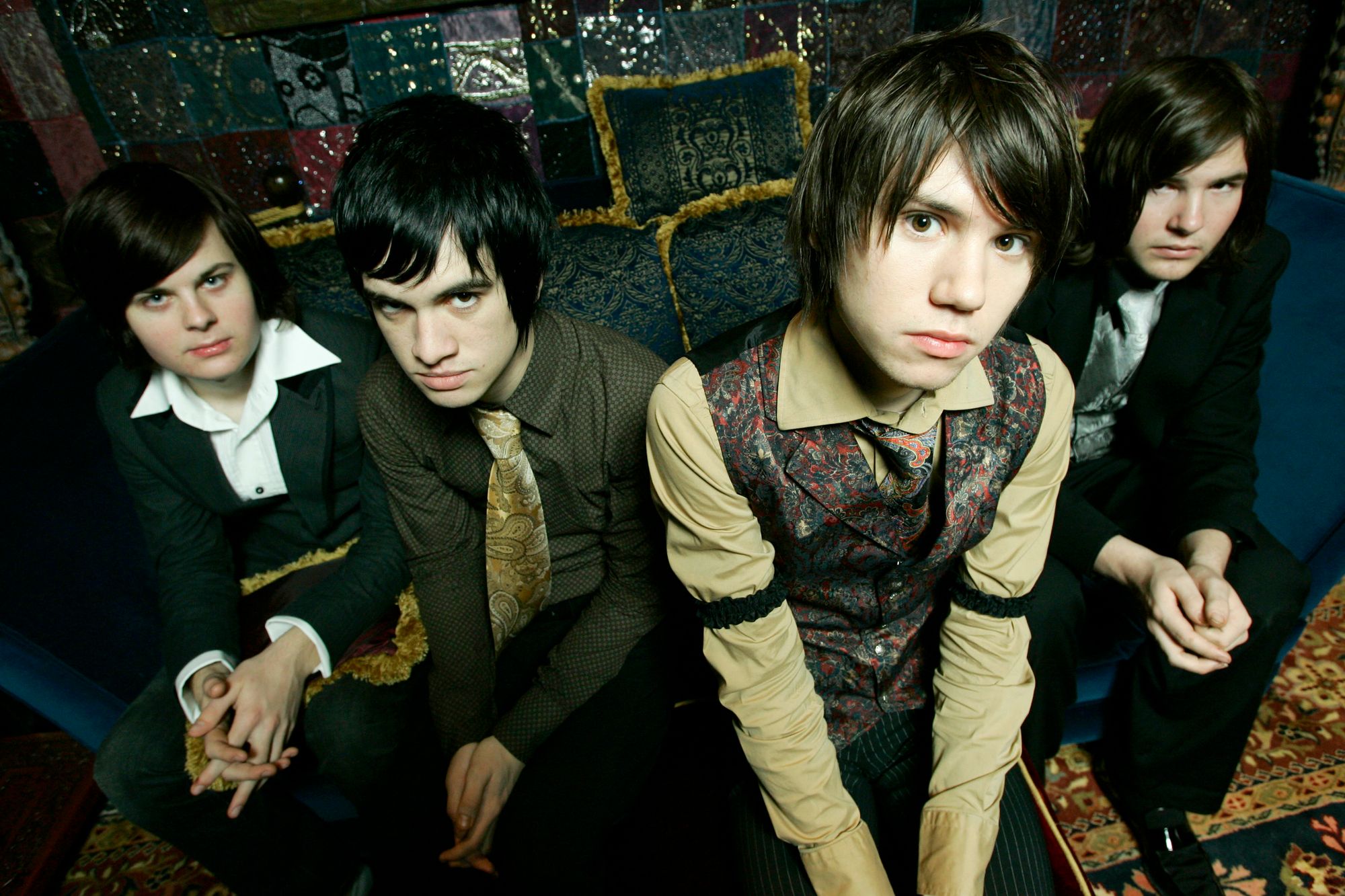FOBMC #1.5: Enter Panic! at the Disco
Four teens with three songs got a record deal. Then what?

Have you joined the Fall Out Boy Music Club? It’s the official fall of Fall Out Boy here at Friendmendations — every other week, we’ll analyze the discography of Chicago’s angstiest export in the subscriber-only bonus posts.
Last week we looked at the origins of Fall Out Boy — their disowned EP Fall Out Boy’s Evening Out With Your Girlfriend and their official debut, Take This To Your Grave — and next week we’ll be looking at their breakthrough hit From Under the Cork Tree. But in between those, I thought it would be fun to check out the arrival of their oddball protégés, Panic! at the Disco.

My mom was incredibly strict about a lot of the media I was allowed to consume. No PG-13 movies before my 13th birthday, and then no R-rated movies after that. I couldn’t put anything on the TV that my younger brothers shouldn’t see. But for whatever reason, we were always a Top 40 household, and I was allowed to explore whatever music I wanted to. I started high school in 2005, an enviable time to be a teen, which meant that I was the target audience for Panic! at the Disco.
Panic was barely a band when they got a record deal. Ryan Ross and Spencer Smith were childhood best friends who had started playing music together their freshman year of high school. They decided to form a real band and invite a friend, Brent Wilson, to join them on bass, and he recruited Brendon Urie, a kid in his guitar class, to play with them too. The four Las Vegas teenagers had written a grand total of three songs together when Ryan, the band’s songwriter, guitarist, and principle creative force, heard that Fall Out Boy’s Pete Wentz was starting his own imprint. He was a fan of the band, so posted Panic’s recorded tracks in the comments of Pete’s LiveJournal in the hopes of getting some feedback. Instead, Pete messaged him directly and said he loved the songs and wanted to see Panic! at the Disco play a show. They had never played a single gig.
They didn’t when Pete flew in to Vegas, either. They invited him to band practice, but they hadn’t yet figured out how to play live to the recorded electronic instrumentation for the tracks. Pete described the performance as “kind of a mess,” but the song’s hooks were catchy, and he was hoping to parlay Fall Out Boy’s success into a bona fide emo boom. So Panic was the first band signed to Decaydance Records, and $10,000 was set aside for the debut album for a group that had only written a handful of songs and never performed live. When the label tried to set up recording sessions, the band members had to request a reschedule: the spring wouldn’t work, because three out of the four would be wrapping up their senior year of high school. Studio time was pushed to June, after graduation.
Panic! at the Disco’s bizarre trajectory was emblematic of that exact time in music history, when the internet was suddenly a viable option for fast-tracking success. Their debut album would come out in 2005, the same year that OK Go shot to viral fame on the brand-new platform YouTube; Adele’s three-song demo would take off on MySpace the following year and earn her a record contract. Panic lucked out because they posted the right demo in the right online forum at the right time, a feat that was only accomplished in the first place because, as Urie later remembered, “Luckily Ryan and Spencer had laptops, so we were able to mess around on GarageBand.”
Panic’s whirlwind path to success meant that they had little more than potential to propel them forward. Age restrictions in Vegas had prevented them from being in clubs past 9pm, so they’d never been able to book venues to play live. When they opened for other bands at the Nintendo Fusion Tour, they didn’t know how to get their mics working. Their album’s producer was shocked when they struggled in-studio to figure out their guitar tuners. They would play a festival in 2006 to a crowd so hostile that one audience member chucked a bottle at Brendon’s head, knocking him out instantly. (They won the crowd over by continuing to play when Brendon came to.)
You would think, from all of this, that they would completely suck. They were an inexperienced group of teenagers signed on a lark. But they had Ryan Ross.

Panic was a band evolving in real time, sonically and aesthetically. They pivoted to a wardrobe of dandy suits on a whim, confounding Pete Wentz, who had signed gangly kids in basketball shorts and hats: “Then they showed up the first day of the tour in these paisley suits. I was like, ‘What the fuck is happening?’” You can see how A Fever You Can’t Sweat Out was the work of a band trying to figure itself out. Their bass player was replaced between the recording of the album and its tour. (By some accounts, Brent Wilson’s playing doesn’t appear on the record at all, his parts re-recorded by Brendon. Producer Matt Squire described the situation thusly: “He wasn’t competent as a bass player.”) Brendon was still new to singing and blew his voice out immediately, necessitating that almost all vocals be recorded over the course of a single day. They only had a handful of finished songs by the time they arrived in the studio to record, so the rest of the album was written as they went. This probably explains why the first two songs are devoted to spelling out who they are, introducing them to fans (“Swear to shake it up if you swear to listen / Oh, we’re still so young, desperate for attention”) and anticipating backlash from critics (“Well, we’re just a wet dream for the webzine / Make us it, make us hip, make a scene / Or shrug us off your shoulders, don’t approve a single word that we wrote.”)
Ryan clearly had a vision, or, perhaps more accurately, too many ideas. The hyper-literate songwriter took influences and imagery from books, movies, and soundtracks, packing the album with nonstop references. (Two songs are titled with lines from Douglas Coupland’s Shampoo Planet. Palahniuk references show up in no fewer than four songs, one of which simply describes the plot of his novel Invisible Monsters.) I suspect that it was Ryan’s idea to request Matt Squire instead of the producer the label had suggested based off Squire’s prior work on indie records. When the group couldn’t decide if they wanted to do cabaret-tinged electronic dance music or more straightforward rock, Squire suggested dividing the album in a way that allowed for both. Thus, the album is split into two sides, separated by an intermission that interpolates a line from Orson Welles’ War of the Worlds broadcast. So. Many. Ideas.
When describing a band like Fall Out Boy, it’s important to discuss their musicality. Fall Out Boy was a group of three extremely talented, creative musicians and Pete Wentz who brought a hardcore edge to a pop genre. Panic’s strength was in its ideas — Ryan’s, mostly — that created a colorful, dramatic world over the span of one album. The bandmates’ guyliner and straight-ironed hair placed them firmly in the same scene as their mentors, but their theatricality was completely their own. The stories in the lyrics are often completely made up, or at least transported to a different time. A song about visiting a strip club after a breakup, drawn from Ryan’s actual experience, sets the scene in a “cabaret” with a “burlesque queen” instead of in the seedy Vegas joints he would have actually known.
But Ryan’s real life informed the album’s heaviest subject matter. Bitter sniping at a cheating ex shows up, as is expected from any emo album, but more moving are the songs about his father, an alcoholic ex-Marine who raised him in the absence of his “free spirit” mother. “Camisado” vividly, surreally describes experiences of visiting his father in the hospital after binges, from “the scent of dead skin on a linoleum floor” to the “bruises and contusions” his father sustained while “causing a commotion on the gurney.” (His father would die the following year, while the band was touring the album and performing this song. “I got back out on tour and only missed three shows,” Ryan told an interviewer on the road.)
Elsewhere, though, the sounds and images are pure fantasy. They recall the romantic, glamorous past as filtered through the lens of movies that capture teens’ hearts. The use of old-timey instruments like the accordion and vaudeville-style piano were certainly influenced by Ryan’s love of movie soundtracks, notably Amélie and Danny Elfman’s work on Tim Burton movies. He admitted to an obsession with “any true love story, whether it’s Romeo and Juliet or Phantom of the Opera or Titanic. I don’t know what it is, but something about the idea of a gentleman wearing a suit and being literate is fascinating to me.”
That the album’s imagery includes top hats, canes, banquet halls and burlesque is not particularly surprising. Goth kids have always been inspired by the Victorian and Romantic, and Panic was repackaging that with laptop electronica and pop-punk angst. The songs were weird, catchy, and — most importantly — horny. I never played this album around my mom. I had no idea that the band members were just a few years older than me, and I certainly couldn’t tell that Brendon Urie was a nerdy Mormon under the legal drinking age from the way his voice, low and close to the mic, delivered the lines “Is it still me that makes you sweat? Am I who you think about in bed?”
Looking at the album as an adult, the band’s immaturity often shows through. Their biggest hit, “I Write Sins Not Tragedies” invents what a teenage boy in the early aughts sure would imagine to be a serious problem faced in adulthood: what if you found out on the day of your wedding that your fiancee was a giant slut? There are other hints that Panic! at the Disco was made up of four teenage goofballs. They thought it would be funny to make their song titles impossibly long as a giddy attempt at one-upping bands like Fall Out Boy’s wordy titles, resulting in intentionally ridiculous names like “The Only Difference Between Martyrdom and Suicide Is Press Coverage” and “There’s a Good Reason These Tables Are Numbered Honey, You Just Haven’t Thought of It Yet.” One song title, “I Constantly Thank God for Esteban,” was a line from a cheesy informercial they loved to mock. Even the exclamation point in their name was originally a joke. Looking at old press photos, it seems obvious that the suits were a set of armor. The boys look like babies, play-acting at adulthood.

But it’s their singular strangeness that made them appealing. They weren’t rock stars trying to appeal to weird teens by seeming weird themselves. They were pop culture-obsessed outcasts with a lot of ideas who had lucked into the resources to execute them. Their videos and tour incorporated imagery from the circus and Moulin Rouge! The strip club of Ryan’s imagination features a regular taking “dignified sips of his dignified peach and lime daiquiri.” A sordid affair in a cheap motel is described in terms of a Sound of Music remix (roaches and stained sheets are some of one’s least favorite things) and a magic trick, with the walls “decomposing / right before your very eyes!” One song declares that “When you’re in black slacks with accentuating off-white pinstripes, everything goes according to plan,” a statement so specific that I’m sure no one else, teenager or otherwise, has ever expressed a thought like it. Signing Panic makes sense on paper, since Pete Wentz certainly figured that a group of teenagers could speak to the audience that his own band was aging out of. But while Pete would role-play being a teen on his own album that year, with lyrics about chasing “the girl all the boys want to dance with” and “sleeping on your folks’ porch,” the children in Panic were playing out much weirder scenarios, like sabotaging a banquet for social climbers or being a moody man having an affair in the 1930s.
Panic! at the Disco is a band so idiosyncratic that their entire existence almost seems like a fluke. Brendon Urie’s incredible vocal range was a surprise to not just his bandmates, but also himself: when he’d originally filled in on vocals in one practice because Ryan was sick, the others demanded to know why he hadn’t told them he could sing and he responded, “I didn’t know I could.” A self-described “a Ritalin kid” and “spaz,” Brendon made sense as a frontman already, since he was more high-energy and over-the-top than Ryan. He was not, however, a theatre kid, a fact that I simply cannot wrap my brain around.
Look at the video for “But It’s Better If You Do,” and try to ignore the fact that it appears to be a knockoff “Mr. Brightside” shot in an Olive Garden on a budget of $18 and some Party City gift cards. The prom-rental tuxes and Halloween costumes on the baby-faced stars only add to the obvious: Brendon Urie is a true-blue theatre kid. It’s not just his strong, clear voice, which has gotten even better throughout the years. He’s a ham, a high-energy weirdo who pronounces the word “caricature” in so convoluted a way on the album’s closing track that it has haunted me for almost 15 years. Watch the opening melodrama of the above music video and try to tell me that this boy never appeared in Arsenic and Old Lace in high school. I can’t accept it. The boy’s a Mulaney, a clear-cut case of late-onset theatre kid tendencies that make sense but are unsettling nonetheless.
Brendon is now the only remaining member of the band that is still known as “Panic! at the Disco,” a musical ship of Theseus that keeps its name but keeps losing and changing its parts. Perhaps the band’s trajectory from Fever was inevitable. Ryan thought their success was unearned, considering the album “more like our experiment for figuring ourselves out” than a good work that stood on its own. He had bigger ideas for the next one, Pretty. Odd, but that didn’t sell as many units. He and new bassist Jon Walker left to form their own band, the Young Veins, and Brendon and Spencer tried to hit reset on their initial success. That the first post-Ryan video asks the aesthetic question “what if our top hats were steampunk this time?” speaks to the new lineup’s relative dearth of originality in references.
Is A Fever You Can’t Sweat Out good? Perhaps I only think so because it was the soundtrack I played while scouring the internet for ideas for my prom dress. I see why Ryan thought it was rough, but I also see why plenty of kids, many of them younger than me, wore the album out. It’s the same reason we watched Titanic or Amélie or Moulin Rouge! or The Nightmare Before Christmas: because we wanted to get swept away to a different world, one that was more sophisticated or romantic or dark or dangerous. I don’t know why kids listen to Panic! at the Disco nowadays, though I’m told that they still do. I suspect that it’s the same reason as anyone enjoys any pop artist, as it’s a very different band nowadays. They no longer make music explicitly for dramatic teens obsessed with old-fashioned glamour. But those kids are still around, and A Fever You Can’t Sweat Out is still there for them if they want it — a little dated, but otherwise removed from time, eternally teenaged and nostalgic and over-the-top.
Subscribe for the bonus posts to join the Fall Out Boy Music Club and access the full archive.
The Fall Out Boy Music Club logo was designed by Chuck Kaslow. Please tell your friends to join the club!
